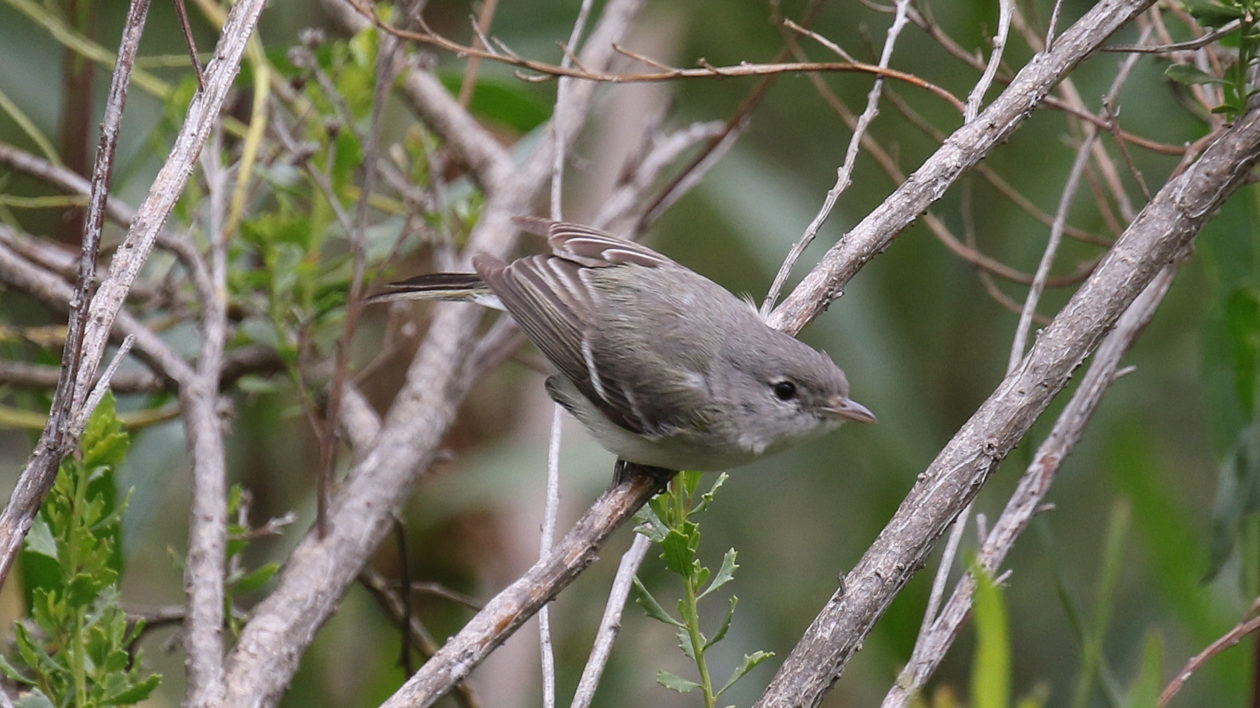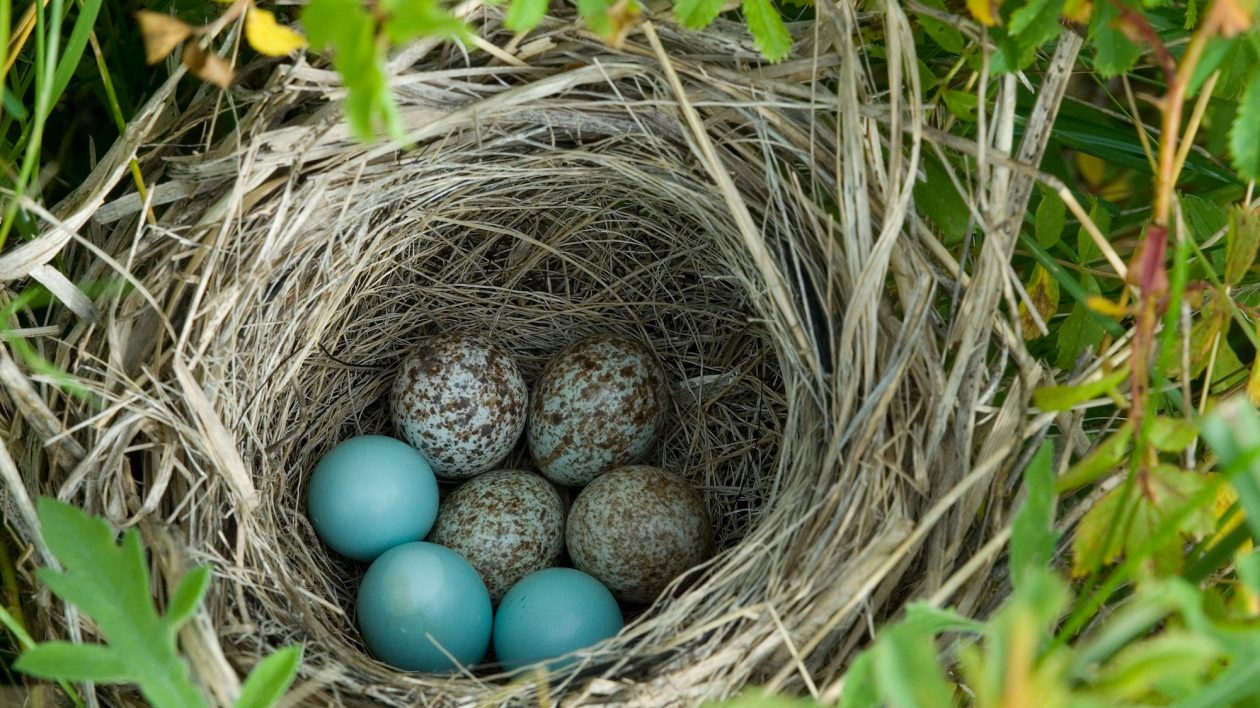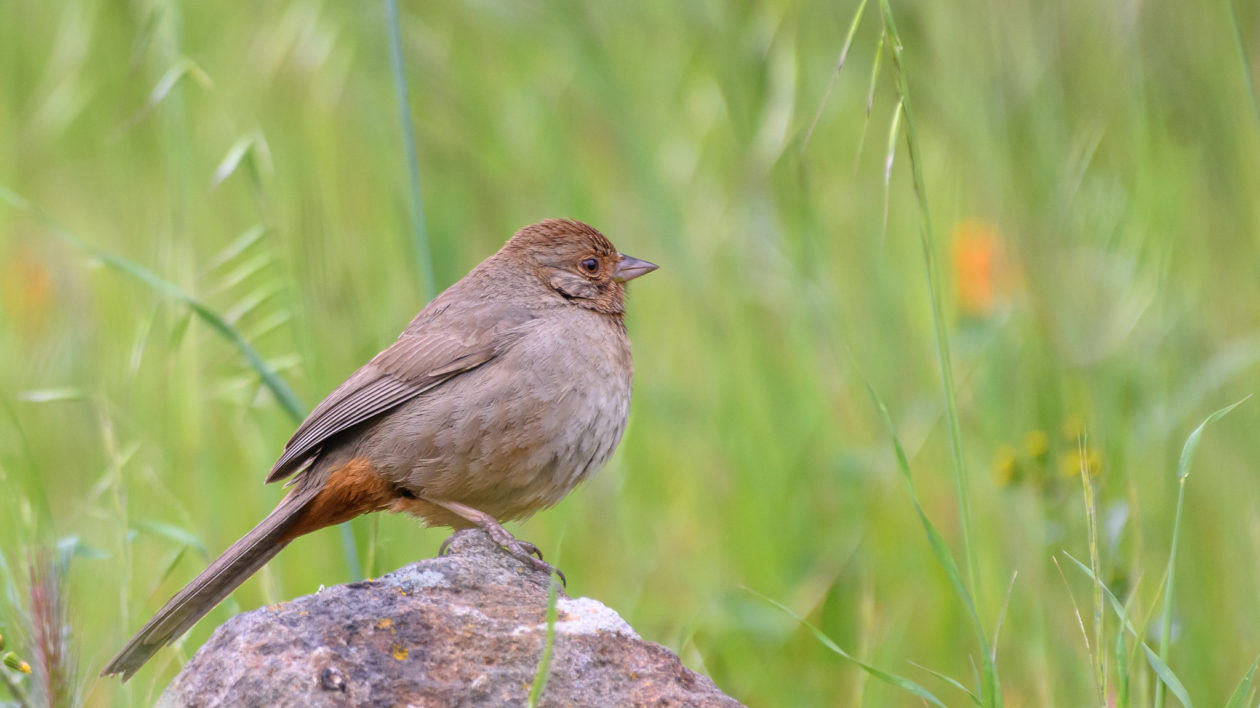Songbirds are in trouble. My home county of Los Angeles has been named the birdiest in the United States, yet songbirds like the least Bell’s vireo (Vireo bellii pusillus) are endangered here. It’s no surprise.
Migratory songbird species like the vireo spend the winter in Latin America, and then fly north in the spring to breed in the vegetation that grows along our rivers and streams. Waterways, and the vegetation growing adjacent to them, are naturally rare in Southern California.
Humans have further reduced the extent of these riverside habitats through agricultural activities and urbanization, the building of dams, river channelization, and the clearing of vegetation.
As a result, remaining habitat patches suitable for nesting songbirds are small and support far fewer individuals than they once did.
So, our songbirds are in trouble in part because of habitat loss. This problem is compounded by another threat – brood parasitism by the brown-headed cowbird (Molothrus ater).
Because they don’t build nests, incubate eggs, or feed chicks, cowbirds save their energy and are able to produce up to an egg per day each nesting season. It’s a fascinating strategy for survival, but the host birds – including the endangered vireo – pay the price of raising the cowbird young.
Cowbirds are native to the Great Plains of North America, but after the last ice age, they didn’t begin making their way into California until about 120 years ago. It is thought that some species are therefore less well-adapted to cope with brood parasitism.
The vireo is one of them.

Trapping Cowbirds to Save Vireos
The vireo may be considered a conservation-reliant species in some locations – that means that in order to survive, it requires direct human assistance in the form of cowbird control. Reducing the impact of cowbirds has been a major focus of conservation management for the vireo.
By trapping and removing cowbirds, managers can significantly reduce or even eliminate cowbird parasitism of vireo nests. As a result, mitigation funds for the disturbance or destruction of vireo habitat have in many cases been channeled into cowbird trapping.
The Nature Conservancy has regularly used trapping to control cowbirds and support the recovery of the vireo and other songbird species. Several years ago, I presented the results of our trapping program on the Santa Clara River in southern California at a Partners in Flight conference – we had been trapping for 25 years at that point, were operating 20 traps during the nesting season, and had captured and removed 239 cowbirds that year. I was approached afterward by two ornithologists.
“We think you are trapping too much,” they told me.
As it turns out, cowbird traps are not a silver bullet.

First, they catch more than just cowbirds. On the Santa Clara River, California towhees (Melozone crissalis), yellow-headed blackbirds (Xanthocephalus xanthocephalus), and red-winged blackbirds (Agelaius phoeniceus) are just a few of the non-target species that are often found in cowbird traps.
While they typically survive the trapping experience itself, their time in the trap is time they can’t spend on other important activities such as foraging and incubating eggs. So, the traps could be harming species other than just cowbirds.
Second, it is expensive to operate cowbird traps. Some argue that we spend too much conservation funding on cowbird trapping, and not enough on protecting and restoring the habitat that vireos need.
While funding for these activities may not be interchangeable, it is important to consider what other means of cowbird management might benefit songbirds like the vireo, while minimizing costs and harm to other species.

Adaptive Management
In 2015, we formed a cowbird working group on the Santa Clara River to do just that. We conducted a multi-year experiment to test three different cowbird management strategies, while monitoring nest parasitism to see how these changes impacted vireos. First, we tried using nets to capture individual cowbirds. Second, we tried operating the cowbird traps continuously, but over a shorter trapping season. Third, we tried to capture specific individual cowbirds by deploying a trap for a very short duration.
The results of our study have just been published in the Journal of Wildlife Management.
Nets did not work to capture cowbirds at our site, perhaps because the vegetation, and therefore the songbirds and cowbirds, was spread over an area of several hundred acres. In contrast, we found that when operating traps continuously, we could shorten the trapping season by a month and still eliminate brood parasitism of vireo nests.
We also found that very short-duration trapping worked well to capture individual cowbirds. Combined with monitoring of both cowbirds and vireo nests in the field, very short duration trapping is an option that can allow managers to stop operating traps continuously, and vastly reduce the number of non-target individuals caught in traps.
Additionally, there was significant cost saving associated with using the very short duration trapping strategy vs. the continuous trapping strategy.
The upshot is that the cowbird trap remains a valuable tool for managers to benefit endangered songbirds. But it is one that should be used in a sparing and targeted fashion, both to avoid harming other species, and to make the best use of conservation funds. Over-trapping is a costly trap for managers to avoid.




Cowbirds hate Safflower seeds. Small birds and many other birds will eat Safflower seeds also. When Cowbirds are migrating – Put nothing bud Safflower seeds out. They will move on, after a week or two, to look for better-preferred food.
As soon as you see two or more, immediately switch your feed. This is about the only way to rid them. If the end of their migration is your location… you only have two choices… 1) Swap food for the entire season and maybe lower the number of species at your feeders or 2) let the Cowbirds stay and bully and and maybe kill your songbirds’ babies and their eggs.
Trapping may catch a few other birds, but to me, that is way more acceptable than what the cowbirds do to millions of other birds. You can’t have it both ways!
The government needs to amend the Migratory Bird Act and remove the protection cowbirds enjoy. When cowbirds are eliminated from an area, song bird populations return to normal within 2 -3 years
I live in Blue Ridge, Georgia and have a pair of the Brown Headed Cowbirds at my feeder. Do I need to be concerned and try to eliminate them or not. I have no way of trapping them because of the “Forrest” area I live in. Concerned about the future of the other smaller songbirds , i. e. Finch, warbles and cardinals.
I’m hoping to get cowbirds to feed my breeding falcons. Anyone trapping them and looking for a way to utilize them, please contact me.
Interesting. Good point, but the situation is far worse than just the Bell’s vireo case–they have benefited much more than higher-nesting species. American goldfinches, willow flycatchers, Swainson’s thrushes, purple finches, warbling vireos, and yellow-breasted chats have been essentially eliminated as breeding birds from my area (Riverside-San-Bernardino, where I have birded for 56 years), and yellow warblers and other species are rare. Cowbirds are certainly part of the story here, probably the biggest single part.